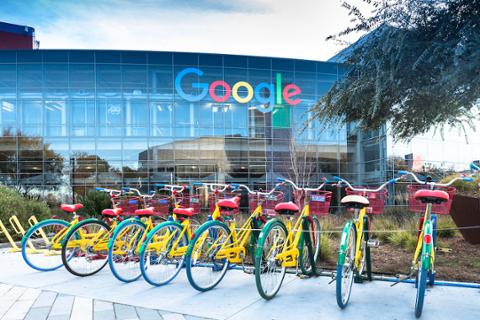So long as social-distancing measures remain intact across the country, the majority of job interviews will take place remotely, either via phone or a video-conferencing platform such as Zoom or Skype. Although a video interview shares a number of similarities with an in-person meeting, there are crucial differences that you need to understand and consider long before you log in.
In the past, we’ve offered some advice about remote interviews; for example, you should make sure that your necessary software is up-to-date, and that the company’s culture aligns with your interests and values (as much as you can evaluate something like that via a video feed). Now, we’ve queried experts for their opinions on how technologists could put their best foot forward during a remote interview. Here’s what they had to say.
The Obvious
Sometimes the obvious should be stated, so we’ll start there. Here are a few tidbits you should always keep in mind during remote interviews, no matter what the company or interviewer:
Know how to log in to the video call: Know the video platform cold. Download the app well in advance, set up your account, and test your hardware before proceeding. There’s nothing like a last-minute technical snafu to fluster you.
Be early: There’s no harm in logging in a few minutes early. Just be mindful that the interviewer may need to let you into the chat, or will log in to see you waiting—so don’t do or say anything weird once you’re logged in!
Look at the camera: Pro tip: Arrange the chat window just below your camera so that, even if you look at the person in the chat rather than right at the camera, it’s better than you staring at the bottom of your screen.
Prepare your questions in advance: You know how interviewers always ask if you have questions for them? That will surely come up during your video interview. Have 3-5 questions you want to ask prepared ahead of time, just as you would in an in-person interview.
Mind Your Space
Technologists should mind their backgrounds, which can prove a distracting factor during a video chat. Chans Weber, founder and CEO of Leap Clixx, told Dice: “Having things going on behind you can be off-putting and shows that you may not be taking things seriously. Think about finding a quiet location to focus on the interview.”
Drew Falkman, Director of Strategy at Modus Create, added: “Be mindful of your video presence. Make sure your space isn’t cluttered and your lighting and sound are set up. Not managing [your surroundings] shakes confidence in your ability to stay connected and present.”
Some experts advise conducting the interview against as blank a backdrop as possible, in order to minimize distractions, but others feel that a few objects or wall art can highlight your personality. Just keep in mind that an interviewer may ask you questions about something behind you (“When did you win that award on your shelf?”), so be prepared. Your space conveys a sense of who you are and (if you’re in your home office) how you work; excessive clutter may not instill confidence.
Stand Up!
We don’t all have standing desks, but we should all stand up for interviews if we can, advised Noel Andrews, CEO of Jobrack: “When you stand up, you’re able to breathe easier, automatically give off a better impression through your posture, and have more freedom to move and to be a little more animated in your discussion. Use your kitchen worktop or pile some books up on your desk—whatever it takes to be stood up. This applies whether you’re on video or just on audio. You have more energy when you’re standing, so use it!”
Robert Kienzle, Senior Consultant at Knowmium, agreed: “This might take more physical tech arrangements, but if possible, stand up during your interview. [Standing] often increases energy. It can increase body language in your face and hand gestures. It also raises your voice quality by opening up your lungs and making your voice slightly louder.”
Stalling is Okay; Just Be Mindful of Time
Stephen Halasnik, Managing Partner at Financing Solutions, has an interesting take on remote interviews: “Online interviewing is very different. When you are in an in-person interview, it is hard for the interviewer to end the interview early if they don’t like what they are hearing. That means you have a better chance to win someone over due to the length of an in-person interview. With a phone or online interview, it is less personable, so interviews will tend to be shorter.”
As Halasnik points out, short interviews tend to imply things didn’t go well. One tactic he advises is to use open-ended questions at the end of the interview to gauge how an interviewer may feel about you. If you ask them what’s best about the employer (for example) and receive a short and uninspired answer, it may mean they’re just not interested.
Professor of Management and Human Resources Timothy Wiedman advises candidates to be brief but thorough when it comes to your answers during a remote interview, especially if you’re in a short slot (i.e., 30 minutes or so). “When you think that you have properly answered a question, stop talking,” he noted. “A short four-sentence explanation rarely requires three paragraphs of background material. Unnecessary or off-topic information and long-winded answers will often annoy interviewers, especially if they have a lengthy list of questions to ask.”
Keeping your answers short will help you avoid the situation highlighted by Halasnik, where it’s clear that the interviewer isn’t that into you as a candidate. Lusel Mendel, Director ofDeveloper Relations at KARAT, agrees with Wiedman’s advice: “For behavioral questions, be brief. Give an overview, answer the question, then turn it into a conversation. This especially helps if you're a rambler. You don't want to spend 10 minutes setting up the context for your story.”
If the remote interview involves a problem set or a challenge of some kind, you can also get a little more verbose—to a point. You need to walk the interviewer through your thought process in solving the problem, which means including as much detail as you think will help. Even so, do your best to stay as succinct as you can.
Body Language Matters (Even After the Interview)
Just as body language plays a huge part during in-person interviews, make sure that your posture and facial expressions are optimized during the remote interview. “Try to ensure that your facial expressions are in sync with the tone and content of each answer that you provide,” Wiedman said.
Matt Bertram, CEO at EWR Digital, added: “Don’t fidget unnecessarily, but use your hands to emphasize your points and nod to show you’re listening.” Stay aware of how, when you’re close to your camera, even relatively small movements may look quite exaggerated.
When the interview concludes, make sure to maintain your posture and facial expressions for at least a minute after you think that the app has ended the connection. Or as Paige Arnof-Fenn, founder and CEO of Mavens & Moguls, put it: “Don’t let your guard down before you log off. The mic may still be live!”
The same goes for the camera, so don’t slump down abruptly or do something unprofessional immediately after the connection ends. It might give the interviewer the wrong idea.
Take Notes
Remote interviews may have an advantage: It’s easy to take notes without interrupting the flow of the conversation. Søren Rosenmeier, CEO at Right People Group, told Dice: “It might sound old-fashioned, but have a pen and paper nearby. You can take notes without touching your computer. The less you touch your computer the fewer times your interviewer hears you typing or sees you losing focus.”
Dana Case, Director of Operations at MyCorporation, agreed: “Don't be afraid to let your interviewer know that you may be taking notes during the call together. This is critical to ensure you have the answers to necessary questions you'll be asking and will not forget them later. Take physically written notes in a notebook rather than typing them into a separate document on the same computer. This ensures you can look down while writing and then look back up at the camera lens once you're done.”
Best of all, taking the occasional note shows that you’re engaged with the interviewer and what they’re saying, which may work in your favor when the company is considering which candidates to elevate to the next interview round.



